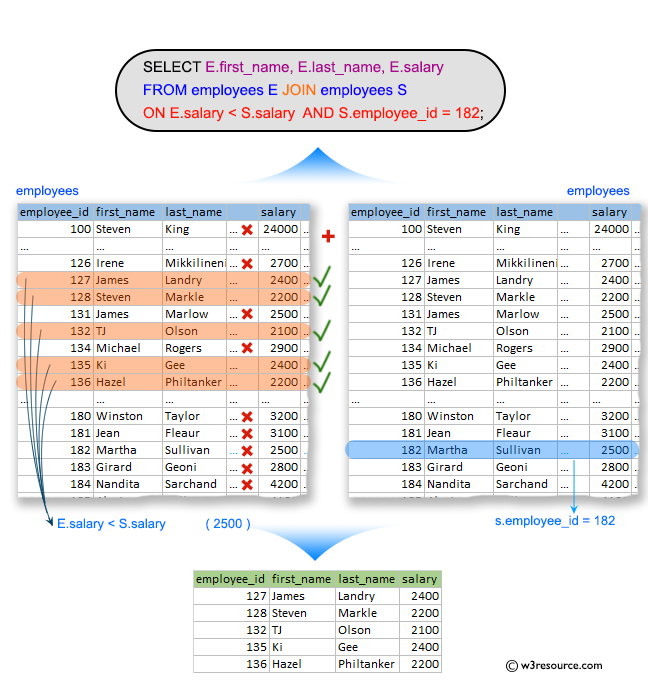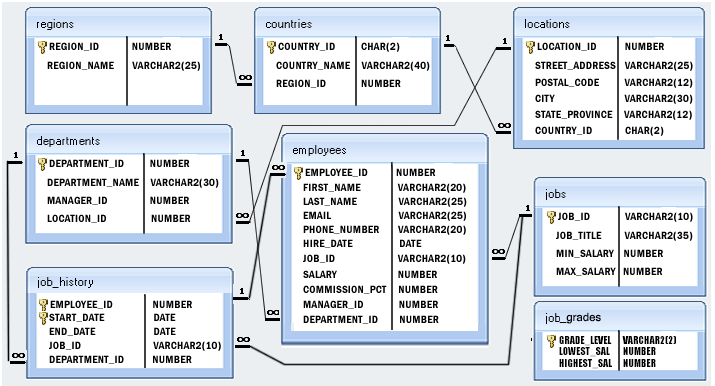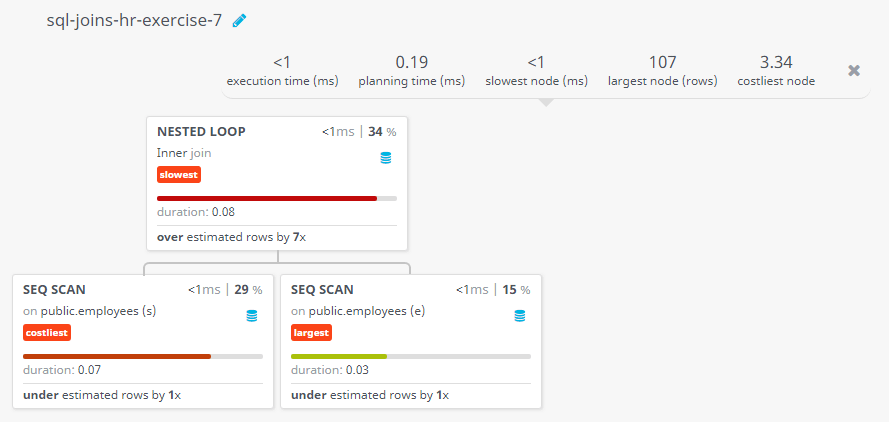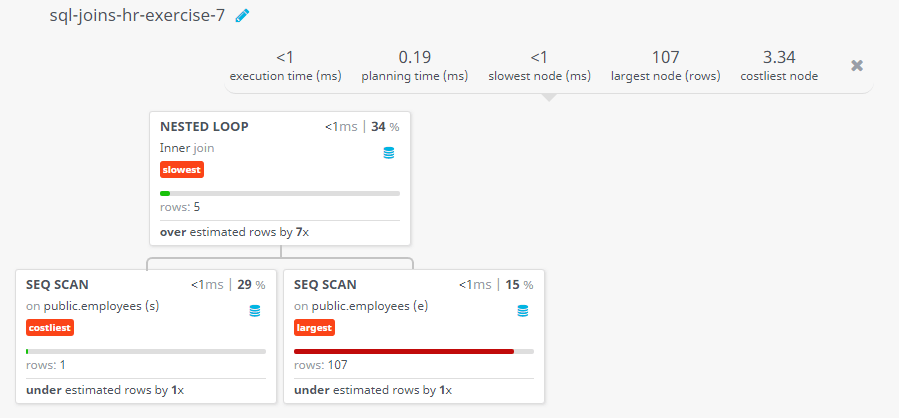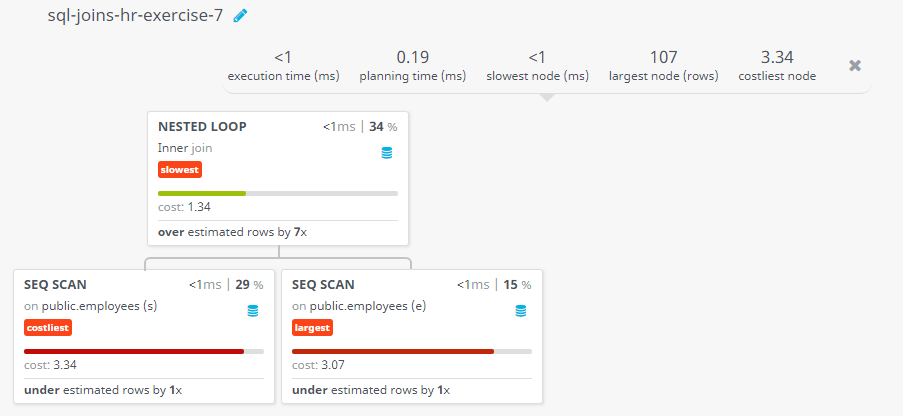SQL Exercise: Employees who earn less than employee 182
7. From the following table, write a SQL query to find the employees who earn less than the employee of ID 182. Return first name, last name and salary.
Sample table: employees
Sample Solution:
-- Selecting specific columns (E.first_name, E.last_name, E.salary) from the 'employees' table, aliased as 'E'
SELECT E.first_name, E.last_name, E.salary
-- Performing an INNER JOIN between the 'employees' table (aliased as 'E') and the 'employees' table (aliased as 'S') based on the condition that 'E.salary' is less than 'S.salary' and 'S.employee_id' is 182
FROM employees E
JOIN employees S
ON E.salary < S.salary
AND S.employee_id = 182;
Sample Output:
first_name last_name salary James Landry 2400.00 Steven Markle 2200.00 TJ Olson 2100.00 Ki Gee 2400.00 Hazel Philtanker 2200.00
Code Explanation:
The said query in SQL that selects the first name, last name, and salary of all employees who earn less than the employee with ID 182. The query retrieves data from the employees table.
The JOIN clause joins the employees table with itself using the salary column, which is used to compare salaries between employees. This type of join is known as a self-join.
The ON clause specifies the join condition, which is that the salary of the employee from the left table (E) must be less than the salary of the employee with ID 182 from the right table (S).
Relational Algebra Expression:
Relational Algebra Tree:
Visual Presentation:
Alternative Solutions:
Using a Subquery with Comparison Operator:
SELECT E.first_name, E.last_name, E.salary
FROM employees E
WHERE E.salary < (SELECT salary FROM employees WHERE employee_id = 182);
Using a Correlated Subquery:
SELECT E.first_name, E.last_name, E.salary
FROM employees E
WHERE E.salary < (
SELECT S.salary
FROM employees S
WHERE S.employee_id = 182
);
Go to:
PREV : Departments which does not have any employee.
NEXT : Employees including the first name of their manager.
Practice Online
Query Visualization:
Duration:
Rows:
Cost:
Have another way to solve this solution? Contribute your code (and comments) through Disqus.
What is the difficulty level of this exercise?
Test your Programming skills with w3resource's quiz.

